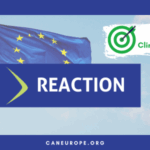Just a few weeks before Brussels winds down for the Summer, an agreement has been reached on a multi billion euro EU fund which aims at driving more private investment in development – the so-called EU External Investment Plan (EIP).
The EIP burst on to the scene in September 2016, and since then it has been swiftly negotiated and debated among the EU’s institutions. The ambition behind adopting the Plan within such a short time frame lies in the hope to unveil the new initiative at the EU-Africa summit in November 2017. That meant speedy proposals, discussions and compromises throughout the first half of this year.
The agreement was met with tepid reaction from NGOs that have been following the negotiations in Brussels. While the EU claims that the Plan could generate decent jobs and promote green growth, there are strong reservations that investments and projects will result in meeting the needs of poorer people and communities in developing countries.
The first pillar of the EIP is the European Fund for Sustainable Development (EFSD). It will “blend” public and private financing to offset the risk to firms investing in developing countries. According to the European Commission, it will mobilise up to €44bn – and possibly double that if Member States agree to contribute.
Some of the biggest concerns of NGOs following the process include; using aid to leverage private finance, the lack of a grievance mechanism to flag problems with projects and activities, and the overwhelming focus on migration which may divert support for poverty eradication and longer term climate action.
By Maeve McLynn



